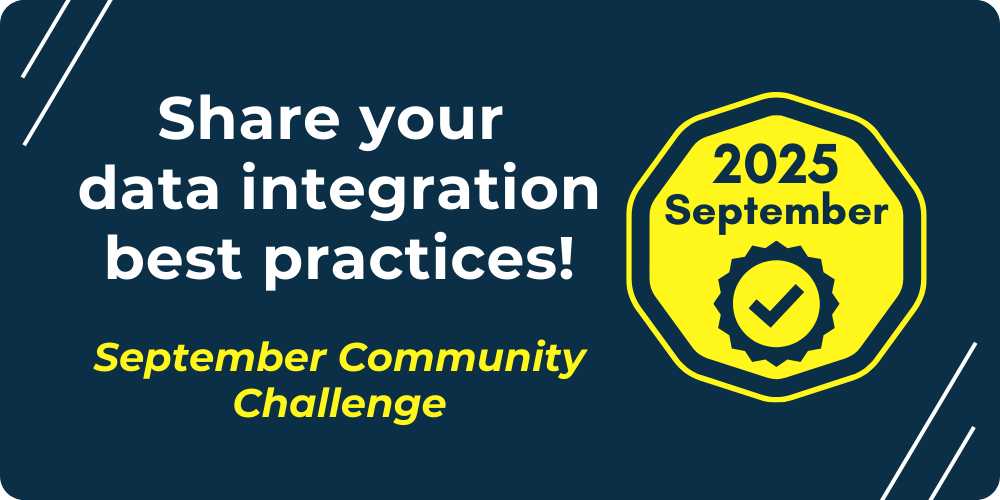Best Of
How I Built It: Codebreaker game in Anaplan
Author: Chris Stauffer is the Director, Platform Adoption Specialists at Anaplan.
My kids and I enjoy code-breaking games, and so I wondered if I could build one in Anaplan. Over the years, there have been many versions of code breaker games: Cows & Bulls, Mastermind, etc.
The object of this two-player game is to solve your opponent’s code in fewer turns than it takes your opponent to solve your code. A code maker sets the code and a code breaker tries to determine the code based on responses from the code maker.
I came up with a basic working version last year during an Anaplan fun build challenge. Here's a short demo:
If you would like to build it yourself, the instructions on how the game works and how to build it are below.
Game start: Code maker input
Player 1 code maker starts the game by going to the code maker page and choosing a secret four color code sequence using a grid drop down list. Code makers can use any combination of colors, including using two or more of the same color. You could set up model role and restricting access to this page using page settings to ensure the codebreaker cannot see this page.
Player 2 code breaker input
The code breaker chooses four colors in the first row attempting to duplicate the exact colors and positions of the secret code.
The code breaker simply clicks the first row in the grid, uses a list drop down to make color guesses and then clicks the Submit? button. A data write action writes a true boolean into the code breaker module to turn on the module logic checking, turns on DCA to lock the row submission, and provides an automatic calculated code maker response. Unlike the real board game, the code maker does not have to think about the response nor drop those tiny black and white pins into the tiny holes in the board — the calc module does the work automatically and correctly every time! I’ve been guilty of not providing the correct response to a code breaker attempt which can upset the game and the code breaker.
First guess
Below the code breaker selected blue-red-yellow-blue and clicked the Submit button. Since two guesses are the right colors AND in the right column position, the calculated response is “Black Black”, telling the code breaker that two guesses are in the correct position and are the correct color.
A black color indicates a codebreaker has positioned the correct color in the correct position. A white color indicates a codebreaker has positioned the correct color in an incorrect position. No response indicates a color was not used in the code.
Second guess
In the second row, the code breaker input green in Spot 1, but kept red-yellow-blue and now only has one color in the correct position (yellow spot 3), but gained insight that there are now three correct colors with two in the wrong position thus the black-white-white response.
Third guess
The code breaker selected blue-yellow-green-yellow and now has all the correct colors with only two out of position.
Fourth guess
You have to be a little lucky to break the code on the fourth guess, but hopefully by now you get the idea of how the game works in Anaplan.
The winner of the game is the player that solves the code in fewer guesses than the other player, so each player takes a turn as code maker and code breaker.
Conclusion
The model uses a lot of conditional formulas, text functions (&, MID, ISBLANK, FIND), and custom matching logic, to identify right color and wrong position matches (white) and right color right position matches (black). A very simple couple of UX pages makes it easy to allow for two player game. You’ll have to create the model roles for code breaker and code maker and set up the page security settings.
Attached is the line item export in case you are curious or want to build it yourself. There are probably multiple ways to build the logic or make the formulas more elegant, but it was for me a fun diversion.
Enjoy!
Re: Accessible by design: Our new accommodations for certification exams
Hi
I have completed the recertification exam and Yes! Additional Resources such as planual, Community and Anapedia are available to use even at Kryterion test center
Thanks
Pujitha
 PujithaB
PujithaB
On-Demand Calculation in Polaris
Author: Dave Smith is a Senior Product Manager at Anaplan.
We are thrilled to announce the rollout of On-Demand Calculation in Polaris, a feature that significantly enhances performance and efficiency for our users. On-Demand Calculation is designed to compute values only when they are needed, leading to a more optimized use of resources and faster data processing.
Key benefits
- Reduced latency: Only the necessary cells are recalculated when data changes, which means users experience faster updates and more responsive interactions.
- Lower memory usage: By calculating and storing only the required regions, the memory footprint is significantly reduced. This is especially beneficial for highly-dimensioned line items, where the potential aggregate space is vast.
- Improved performance: On-Demand Calculation ensures that data changes are processed more quickly, as unnecessary recalculations are avoided. This is particularly useful for line items with deep hierarchies and detailed time dimensions.
Real-world example
Consider a line item dimensioned by both Products and Time, where the Products dimension has a deep hierarchy (e.g., multiple levels of product categories) and the Time dimension spans several years with detailed monthly data. Without On-Demand calculation, all aggregates will be calculated at model-open time and on recalculation as below:
Image: A Line Item dimensioned by Products and Time with all values
calculated.
However, the reality is that in such scenarios, only a small fraction of the total possible cells are typically viewed by users. On-Demand Calculation ensures that only these necessary regions are calculated, reducing memory usage and speeding up data changes:
Image: The Line Item dimensioned by Products and Time whenn a User is looking at the ‘top of the house’ value.
How it works
On-Demand Calculation analyses the model on model-open, and marks certain aggregations for deferred calculation. Currently On-Demand Calculation applies to summary methods where the aggregation is the final step and is not referenced in a further calculation, with the exception of Formula and Ratio summary methods which are never deferred. Rather than calculating these regions up-front as was previously the case, these deferred regions will only be calculated as needed. This not only means that the model opens faster, as less calculation is required immediately, but also that writes to the model are made more quickly, as some recalculation is avoided on write.
As calculations are required on-demand, Polaris keeps the calculated regions in cache to improve the performance of future access. They remain in memory until either the upstream cell data changes, making the region invalid, or the model starts running low on memory and the region has not been accessed for a long time. In both cases, the calculated region is dropped and recalculated only if and when it is needed again for a user view – for example if the aggregation needs to be calculated for an export, or it is viewed in the modelling UX or enterprise UX pages.
Impact on users
- End users: Enjoy faster and more responsive data interactions, with reduced latency on data changes.
- Model builders: May notice fluctuations in memory and populated cell counts, reflecting the dynamic nature of On-Demand Calculation. It will also be important to follow best-practice with regards to testing the model on realistic, scaled data in UAT. However, the overall user experience will be greatly improved, and model open and formula recalculation times will be reduced.
We believe this update will significantly enhance the user experience and look forward to your feedback. Stay tuned for more updates and enhancements from Polaris!
Questions? Leave a comment!
 davesmith
davesmith
Talent Builder Graduate Mini Resume - Snehitha Adicherla
Name: Snehitha Adicherla
Location: Ohio, United States
Certification: Professional Model Builder, Certified Anaplan Level 2 Model Building
Educational Background: M.S. in Computer Science, Wright State University (2023-2025)
B. Tech in Computer Science, VBIT (2018-2022)
Profile Summary: Analytics professional with experience in SQL, Python, ETL workflows, and Informatica. Achieved Anaplan Talent Builder Level 2 certification, gaining a strong understanding of planning models and Connected Planning. Eager to apply technical and analytical skills in business and planning-focused roles.
Target Roles:
Anaplan Model Builder
Business Analyst
Financial Analyst
Operations Analyst
Supply Chain System Analyst
Technical Support Analyst
Skills:
Anaplan Model Building
SQL
Python
ETL(Informatica)
FP&A
Power BI
Interview Availability: Available upon request
Start Date: Immediately
LinkedIn URL: www.linkedin.com/in/snehitha-adicherla-54ab6616b
Email: snehithaadicherla2001@gmail .com
#anaplantalentbuildergraduate #certifiedmodelbuilder #opentowork
Data integration best practices — Event recording available!
Last month, we hosted a Community Challenge inviting members to share their best practices on data integrations. We provided both beginner and advanced prompts to encourage members to discuss how they move data in and out of Anaplan, share tips for smooth integrations, and inspire others in the Community.
Yesterday, we hosted an event to highlight the responses we received from the Community Challenge. Jon Ferneau (@JonFerneau), Data Integration Principal, shared his expert insights, recognized participants for their contributions, and presented key takeaways for practitioners along with call-to-action items for our Community to consider.
During the event, Jon gave a shout out to our Community Challenge participants, including @andrewtye @matthewreed @SunnyNafraz @Prajjwal88!
Watch the recording
Timestamps:
- Welcome — 0:00
- Guest host introductions and overview — 1:40
- Community Challenge recap presentation — 3:47
- Q&A — 23:35
- Closing — 42:54
A PDF of the presentation is available here:
Resources for Data Integration Best Practices
- OEG Best Practice: Data Integration Decision App
- OEG Best Practice: Data Hubs: Purpose and Peak Performance
- Getting Started with Anaplan APIs: What you need to know
- [Start Here] Anaplan APIs in a Nutshell
- Understanding Errors and Rejected Lines When Importing Data Via APIs
Questions? Leave a comment!
 becky.leung
becky.leung
October 2025 Spotlight: Community Boss Employees
This month, we’re highlighting the newest Community Boss Employees (CBEs) who joined the program in 2025! The Community Boss Employees program brings together top internal Anaplan experts who actively share their knowledge, support members, and elevate conversations across the Community.
Our CBEs bring fresh perspectives and deep expertise to the Community. They actively answer questions in forums, create valuable content, help shape Community Challenges, and present at events on specialized topics — strengthening collaboration and advancing collective knowledge across the Anaplan ecosystem
To help the Community get to know our new CBEs better, we asked each of them to choose one Community article they believe every member should read and share why it’s particularly impactful. Here is what they had to say!
Allison Slaught (@allison_slaught), Anaplan Intelligence Director – OEG
Why everyone should know this article: Combined grids is a transformative feature that improves the Anaplan user experience. Whether you’re building a new app or maintaining an existing one, this should be on your radar. As the name implies, it allows you to consolidate views from multiple modules into a single, unified grid.
Why I find it valuable: This feature delivers a powerful one-two punch: a more intuitive front-end and simplified back-end. I was able to experiment with it in early access, and the maintenance benefits alone were significant: fewer user filters to build and manage; less need for synchronized scrolling; redundant pages were consolidated or eliminated; and simplified training for new users due to intuitive design. It’s a worthwhile investment to incorporate into your roadmap to enhance existing applications and will quickly pay dividends in both user satisfaction and development time.
Elizabeth Schera (@ElizabethS), Director of Product Utilization & Adoption
End user triggering of workflow processes
Why everyone should know this article: I chose this article because it shows how you can connect Anaplan's modeling capabilities with the real-world business processes (workflow) they support. Even more than the math, workflows ARE the planning process. And, nearly every organization has processes — like launching new initiatives or approving headcount requests — that start with the planner and require structured approvals before being committed. This article demonstrates how to empower your end-users to initiate these actions directly within Anaplan, streamlining operations and ensuring governance is built right into the process.
Why it's valuable for you to read: Getting started on building your first Workflow can feel intimidating, but this guide provides a detailed, practical example covering both the model build and the workflow configuration from start to finish. This gives Workspace Administrators a concrete blueprint they can learn from and adapt to their own unique use cases. It’s the perfect starting point for anyone looking to demystify workflow and unlock its powerful capabilities to automate and control key business activities.
Etienne Waniart (@EtienneW), Principal Platform Adoption Specialist
Streamline hierarchy management with Polaris's new ITEMLEVEL and HIERARCHYLEVEL functions
Why everyone should know this article: Do you work with complex or irregular hierarchies in Anaplan? Then this article is a must-read! It introduces the new ITEMLEVEL and HIERARCHYLEVEL functions in the Polaris engine, which greatly simplifies hierarchy logic, especially helpful when working with ragged hierarchies without needing complicated workarounds.
Why it’s valuable for you to read: These functions make models cleaner, easier to maintain, and significantly more performant. If you design or manage hierarchical structures in Anaplan, this will save you time and help you streamline your logic while making your models more sustainable in the long term. No more need for workarounds using ratio summary methods!
Jan Sypkens (@jan_sypkens), Principal Platform Adoption Specialist
Jan recommended multiple Polaris articles.
Why everyone should read these articles and why it's valuable for you to check out: I recently rebuilt an airport capacity model in Polaris — a Classic model I originally developed in 2017. This was a personal challenge I set for myself to deepen my understanding of Polaris and ADO. In the process, I also discovered the added benefit of leveraging AI to generate artificial datasets that enhance the modeling construct.
Throughout the rebuild, several Anaplan Community articles proved particularly valuable to me, including:
- Anaplan Polaris – Understanding Blueprint Insights and Optimizing for Populated Space
- Anaplan Polaris – Blueprint Insights
- Anaplan Polaris – Populated Space
- Anaplan Polaris – Natural Dimensionality
- Unlocking the power of Polaris: A guide to efficient model building
- Iterative Development in Polaris (ALM)
- Moving a model from Classic to Polaris
Jon Ferneau (@JonFerneau), Data Integration Principal
OEG Best Practice: Imports and exports and their effects on model performance
Why everyone should know this article: Data integration is an integral part of all Anaplan modeling. Ensuring that you have the proper integrations setup can greatly improve your planning experience and build trust in the underlying data that drives your decision making. This best practice article highlights the most important concepts to consider when designing your integration strategy and is a must-read for all Anaplan model builders and IT teams alike.
Why it's valuable for you to read: If you focus on implementing these basic structures and ideas, you will have implemented efficient processes that limit model downtime for end users. Following data integration best practices also make it much easier for your organization to manage and troubleshoot potential data issues, while also making it quicker to build net new integration pipelines into your planning models to support use case growth.
Julien Froment (@julien_froment), Principal Platform Adoption Specialist
Guiding users through the UX best practices — Event recording available!
Why everyone should watch this recording: In the past, we’ve already shared best practices around UX. However, this event recording takes it further — it showcases excellent examples that can truly inspire UX design. To me, UX is not just about technical functionalities — it’s where process, storytelling, and features come together.
This video captures that perfectly, offering strong examples we can learn from and build upon. As Page Builders or end users, it’s worth taking the time to explore this video and see how you can leverage the full potential of the UX.
Why it's valuable for you to check out: It’s valuable because it brings UX to life — showing how thoughtful design can transform user experience. It’s a great source of inspiration for anyone looking to make their pages more intuitive and impactful. Thanks, @ElizabethS and @seb_mcmillan — this event recap is brilliant.
Seb McMillan (@seb_mcmillan), Principal Platform Adoption Specialist
Anaplan Polaris: A deeper dive into the Polaris Engine and model building techniques
Why everyone should know this article: No one should even think about building in Polaris without reading this first — the information here will help you save hours of work.
Why it’s valuable for you to read: Polaris has a number of key differences in implementation approach to Classic and you shouldn't just jump in and hope for the best. Best practice is evolving but this reflects our real world experience in working with the hundreds of models our customer have built.
Theresa Reid (@TheresaR), Architecture & Performance Director
Iterative Development in Polaris
Why everyone should read this article and why it's valuable for you to check out: If I had to choose one I would shamelessly plug my own article, Iterative Development in Polaris. I think this article is important for all Polaris model builders, as it outlines the different approach that should be used when building in Polaris and why. This approach doesn’t feel “natural” for Classic model builders but following it allows for better learning, quick and efficient model building as well as guidance on when and how to do optimization.
…..
We hope you enjoyed getting to know our CBEs and checking out their recommended articles and recordings in this month’s Community Member Spotlight! Share your thoughts in the comments below, and feel free to share your favorite Community articles!
Want to learn more about our Community Member Spotlight series? Check out this post.
Do you know someone in the Community who you think should be featured in a Community Member Spotlight? We want to hear about it — please nominate them here.
 becky.leung
becky.leung
Share your data integration best practices — September 2025 Community Challenge
We’re excited to launch our September 2025 Community Challenge, focusing on one of the most critical aspects of Anaplan success: data integrations. Whether you’re just getting started with CloudWorks or Anaplan Connect, or you have built advanced orchestrations using APIs and Anaplan Data Orchestrator, integrations are at the heart of connecting Anaplan to the rest of your ecosystem.
This month’s Challenge is your chance to showcase how you move data in and out of Anaplan, share tips that have made your integrations run smoothly, and inspire others in the Community.
Challenge prompts
To help spark your ideas, here are some questions you might explore in your response.
Note: Please avoid using AI/ChatGPT when writing your Challenge response — it should come from your own expertise so the Community can learn from you!
Please select one to two prompts from the Beginner or Advanced categories below to answer!
Beginner focus
- How do you set up a simple import or export between Anaplan and a source system?
- What are your go-to tips for mapping flat files or leveraging saved views?
- Do you prefer CloudWorks or Anaplan Connect for your first integrations — and why?
Stretch goals (advanced concepts)
- How do you orchestrate multiple integrations together using Anaplan Data Orchestrator or scheduling tools?
- Have you used APIs to automate your flows? If so, what benefits did you gain?
- What error handling, monitoring, or logging practices keep your integrations reliable?
- Any advice for working with large files or optimizing performance?
Learnings
- In addition to sharing your tips, tell us about mistakes you’ve made and what you have learned from them — your experiences with data integrations can help fellow Community members succeed.
Bonus
- Share a diagram, workflow screenshot, or snippet of your integration script to illustrate your process.
How to participate
- The data integrations Best Practices Challenge kicks off today, September 9, and concludes on September 26.
- Post your response directly in this thread — whether it’s a detailed write-up, a quick list of tips, screenshots, or even a short video walkthrough. Pick one or two prompts from the beginner or advanced categories and let us know your responses! No matter your style, your perspective will help the Community grow.
- Check out tips shared by your fellow Community members.
What's in it for you?
- Recognition: Gain recognition as a data integration pro in the Community.
- Learn from your peers’ creative approaches and best practices.
- Earn a badge: As a thank you for your participation, everyone who shares their best practices will receive an exclusive Community Challenge badge. It’s a fun way to show off your contribution!
- Earn a shout-out in our upcoming event: on October 28, we’ll be hosting an event discussing data integration best practices in an upcoming ACE Spotlight event. Participants' responses will be highlighted at this event.
Ready to get started?
Share your data integration best practices below — whether you’re a beginner experimenting with your first CloudWorks schedule or an advanced builder orchestrating complex API workflows, your learnings and ideas will spark inspiration across the Community!
Anaplan Center of Excellence Charter
The charter template and general information guide are cornerstones to standing up the CoE team. — By Josh Baker, CoE Leader @ PJT Partners, and Asslam Umar Ali, CoE Leader @ Fortescue Metal Group(@Asslam).
Hundreds of customers have established an Anaplan Center of Excellence (CoE), recognizing it as a foundational element for unlocking true Connected Planning and maximizing their investment in the Anaplan platform.
While every Anaplan CoE is unique—shaped by industry, company size, geographic footprint, and use case complexity—we realized all of our customers follow a similar progression in their development. That's why we've outlined 9 critical developmental stages that capture the typical maturity curve of an Anaplan CoE, helping teams benchmark progress and identify opportunities for growth.
Download the Anaplan Center of Excellence Charter Template below.
The 9 Developmental Stages of an Anaplan CoE
Outlined in the Anaplan Center of Excellence Charter Template, these 9 stages provide a roadmap for building and maturing a high-performing CoE:
- Certified Solution Architect
A dedicated Certified Solution Architect, ideally on the path to becoming a Certified Master Anaplanner, ensures scalable design, seamless system integration, and adherence to best practices to support evolving business needs. - Executive Sponsor
A committed and engaged Executive Sponsor is essential to your CoE's success. Their involvement ensures alignment with company-wide strategic goals, provides critical support and visibility, and empowers the CoE with the influence and resources needed to drive meaningful, long-term impact. - Business Proximity
The CoE must maintain strong ties with their partners across the business, ensuring initiatives are grounded in real-world needs and closely aligned with planning objectives. - Recurring Meetings
Regular, structured touchpoints (weekly, monthly, quarterly) keep CoE members aligned and foster continuous collaboration and engagement across stakeholders. - Defect Resolution Process
A clear, documented process for managing bugs, support issues, and SLAs is essential to sustaining a dependable user experience. It establishes clear expectations, fosters end-user trust, and drives adoption by assuring users their issues will be addressed quickly and effectively. - Enhancement Requests
A robust process for collecting, prioritizing, and delivering enhancements allows your CoE to be responsive to evolving business requirements and the requests of end-users. - Connected Planning Roadmap
A well-defined roadmap that outlines past wins, current priorities, and future use cases is essential for sustaining momentum and achieving long-term planning success. It also helps secure stakeholder support for the journey ahead and ensures there's a clear plan in place to allocate the resources needed for execution. - Governance Structure
Your governance model should reflect the structure that best fits your organization—whether centralized, federated, or a hybrid approach. It defines how responsibilities are distributed, ensures standards are upheld, and supports scalable, sustainable growth of the Anaplan platform. - ROI Tracking
Measuring the ROI of your CoE initiatives is essential for demonstrating impact and securing sustained executive support. Define meaningful metrics and apply a consistent approach to track and communicate the value delivered by both the CoE and the Anaplan platform.
The Anaplan Center of Excellence Charter Template is available to help guide you on your CoE journey. This template outlines all 9 developmental stages to guide both newly forming and established CoEs as they build, grow, and mature.
Screenshots of the Template
Use the Charter Template to Guide Your CoE Journey
The Anaplan Center of Excellence Charter Template is your guide through this journey. It offers best-practice examples, templates, and prompts to help document:
- Your CoE's mission and mandate
- Current and future goals
- Team structure and roles
- Governance model and support processes
- Your CoE's place in the broader Anaplan strategy
Whether you're just starting out or refining an established CoE, the template helps you reflect on where you are, where you're headed, and what support you may need to get there.
Please email your completed Anaplan CoE Charter to the CoE Program (COEProgram@anaplan.com) and let us know if you are requesting feedback or guidance.
Download Anaplan CoE Charter Template:
 StaceyB
StaceyB
Re: Acing the Professional Solution Architect recertification
Thank you @marynadunets and for sharing your experience . After reading your insights, I feel much more confident and fluent in approaching for SA Exam.
 namdevgurme
namdevgurme
























